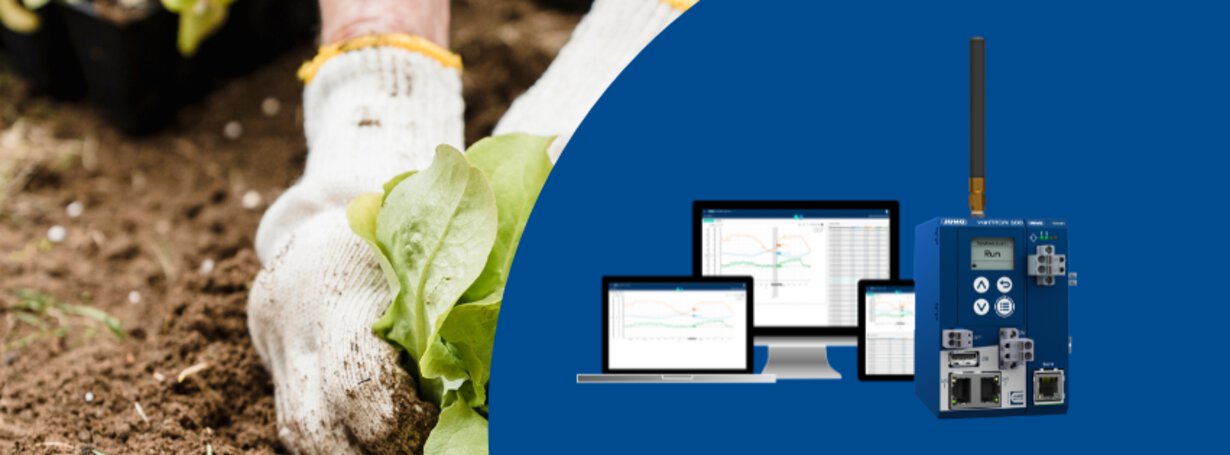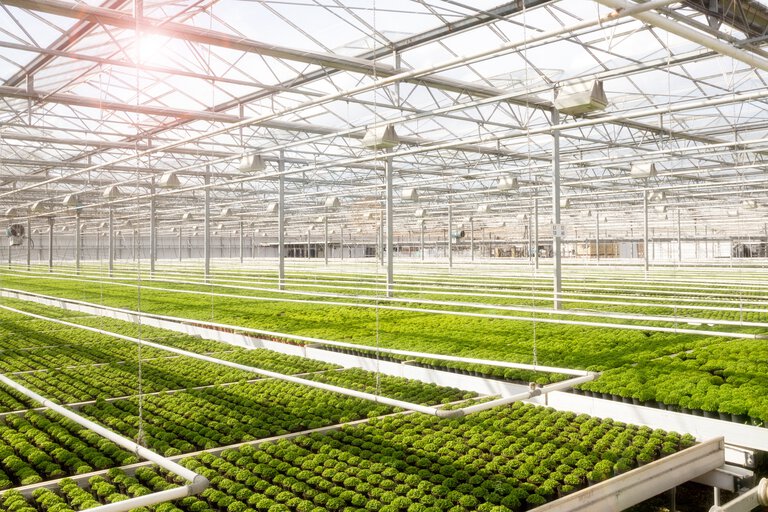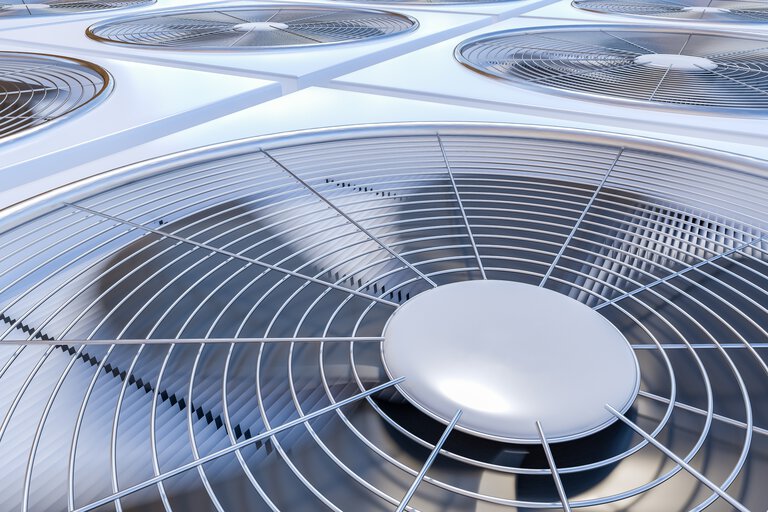

How to remotely monitor technical installations? Automation of climate control for horticulture
How do you effectively manage the technical installations in a greenhouse, horticultural farm or public facility when systems are distributed and data flows in from multiple sources simultaneously? This is a challenge that many horticultural entrepreneurs - including our client - face. Stable environmental conditions, precise water and energy dosing, and infrastructure reliability have a direct impact on crop quality and operating costs. However, with the increasing automation of processes comes the need for data centralization, remote monitoring and immediate response to any parameter deviations. The traditional approach based on local reading and manual monitoring is no longer sufficient especially in facilities that operate around the clock and require real-time control. In this article, we show how JUMO's cutting-edge technology based on digital communication and cloud-based data analysis supports horticulture in its daily work. See how we helped our customer gain more control over technical installations and improve their efficiency.
Why is monitoring of technical installations essential in horticulture?
Today's horticulture is based on technologies that a decade ago were the domain of industry: advanced climate control systems, automatic watering, CO₂ level control, assimilation lights or conductivity and pH sensors in solutions. All of these require not only precise configuration, but above all constant monitoring. With the growing scale of horticultural operations and the increasing importance of energy efficiency, entrepreneurs are looking to react quickly to deviations in parameters. Failure of a single component, such as a pump, valve or temperature sensor, can lead to irreversible crop losses or increased operating costs.
That's why there is a growing demand for real-time monitoring of technical installations, which not only informs about the current state of equipment, but also enables analysis of historical data, automatic error notifications and remote diagnostics. This approach reduces risk, extends the life of equipment and optimizes resource consumption - from water to electricity.
What to do when the current supervision of the installation is no longer enough? The customer's problem
As the technical complexity of horticultural facilities increases, so does the amount of data that needs to be monitored, analyzed and converted into concrete actions. This applies not only to large manufacturing plants, but also to utility installations and modern farms that rely on automation and precise process control.
We were approached with just such a challenge by a client whose installation included electrical switchgear, power systems, valves, pumps and actuators distributed over several zones. Data was generated locally - at various points in the system - and its analysis and ongoing monitoring required switching between distributed sources.
The client's goal was to organize this environment: integrate the data, standardize it and make it available in one location, preferably with remote viewing and automated reporting. A priority was better visibility of plant performance in real time - without the need to be physically present at each system location.
How to monitor technical installations in the horticultural industry? Our solution
Designing an effective technical infrastructure management system for a horticultural facility required an approach that was modular, flexible and open to expansion. The client did not need a revolution or replacement of existing equipment, but rather an intelligent integration - one that would allow data to be collected from various points, unified and made available in a readable and remote manner.
In response to these needs, we proposed a system architecture based on:
- JUMOvariTRON 300 controller,
- I/O extensions that enable local signal acquisition from switchgear, pumps and valves,
- JUMO Cloud Connector, which transmits data to the cloud,
- and integration with the JUMO Cloud platform as a central user interface.
The whole solution allows remote viewing of the installation status in real time, analysis of trends, as well as generation of automatic alerts and reports. An important aspect of the solution was also communication openness - the components used allow to read data not only from JUMO devices, but also from devices of other manufacturers.
The system was designed with the future in mind: further expansion is possible - both in terms of the number of measurement points and functionality. As a result, the customer received not only ongoing support, but also a solid foundation for further digitization of its processes.
How has data centralization and remote monitoring supported the company's work? Customer benefits
By implementing a system based on the JUMO variTRON 300 controller and integrating it with the JUMO Cloud platform, the customer gained, above all, better visibility and control over the entire technical infrastructure. Data from different zones of the plant, previously available only locally, became available from one place, from a web browser.
Key benefits of the solution include:
- Remote access to system performance - the ability to check system status without being on-site, including from mobile devices,
- Better operational decision-making - thanks to trend analysis, measurement history and quick comparison of data from different sources,
- Saving time and resources - fewer “blind” service interventions, greater predictability of events,
- Higher plant safety - the system automatically alerts you when alarm thresholds are exceeded and allows you to react quickly,
- Preparation for further expansion - the open structure of the system allows for easy addition of more measurement points and integration with additional modules.
By implementing JUMO's solutions, our customer gained a more complete picture of the operation of its plant, better control of processes and real support in the daily management of the horticultural facility. A system based on JUMO variTRON, JUMO Cloud and modular automation not only simplified access to data, but also laid a solid foundation for further digitization.
Do you have any questions about our implementation? Or maybe you are looking for effective solutions for your plant? Contact us - we will be happy to dispel any doubts!
If you are responsible for the operation of biomass landfills and want to implement a similar solution at your site - contact us. We will show you how to build a monitoring system tailored to your needs!
About the author
My name is Natalia and I specialize in content creation. I have been sculpting words professionally for three years as an editor and copywriter. My mission is to break down even the most complex issues. I focus on building relationships with the reader and creating experiences. Privately, a lover of travel, literature and fashion.

Technical specialist
Katarzyna Tracz - Inside Sales Engineer +48 71 339 32 86 Katarzyna.Tracz@JUMO.net +48 71 339 32 86Comments
We encourage you to leave comments via the form below. They will be published online after they have been approved by our review process.


